Author: Phil Rusher
Brewers have developed numerous methods to mitigate cold-side oxidation, and for good reason, as popular styles like New England IPA are known to be very sensitive to oxygen exposure, which can turn a juicy delight into a muddy mess in no time. There are a number of vectors for oxygen exposure during the brew process, one of which is the dry hop, a common step that involves hops being added at some point during fermentation.
Traditionally, dry hopping occurred toward the end of fermentation with brewers reasoning that any oxygen introduced would be scrubbed by the still active yeast. With the rise of hazy NEIPA and increased reports of beer-gone-bad, brewers began making dry hop additions at high kräusen or even as early as yeast pitch. To further reduce the risk, some adopted a routine whereby the hops were purged with CO2 prior to being added to the beer, a method of questionable effectiveness.
Over the years, I’ve certainly become a believer in the perils of cold-side oxidation and relied on various methods to keep oxygen exposure to a minimum. While closed fermentation, purging kegs with CO2, and transferring under pressure have been very helpful, dry hopping is the one area I maintained concern, as even when employing the aforementioned methods, I had no way of fully eliminating my beer’s exposure to oxygen. I recently upgraded my brewery to include fermentation vessels with tri-clover fittings, which allow for easy attaching of various accessories.
When Brewer’s Hardware released their tri-clover compatible Dry Hopper, I was intrigued by the idea of being able to purge hops immediately before adding them to a closed fermentation vessel.
The product reviewed for this article was provided by the manufacturer in exchange for an honest review; no other compensation was provided. The opinions expressed in the article are solely those of the author and a concerted effort was made to approach the review from an unbiased perspective.
I received The Dry Hopper within a week of agreeing to the review, it arrived to my house and I immediately proceeded with unboxing.
The Dry Hopper is compatible with 3-inch tri-clover ferrules, though can be fitted with a reducer kit to make it compatible with 4-inch fittings. There are both stainless steel tube and sight glass versions of The Dry Hopper available, I received the latter.
The Dry Hopper uses a stainless steel butterfly valve that drops the hops into the beer when opened.
Also included is a stainless steel cap with a gas ball lock post used for adding CO2 to The Dry Hopper as well as a pressure relief valve (PRV).
Assembly
As someone who has been using tri-clover fittings for a while, piecing The Dry Hopper together was pretty self-explanatory, though the included instructions were very simple to understand. After removing the standard pressure relief valve on my Ss Brewtech Unitank, I attached the butterfly valve, making sure to place one of the included silicone gaskets in the groove before tightening the clamp.
Next, with another gasket in place, I secured the sight glass to the butterfly valve.
Finally, I attached the lid to the top of sight glass using another gasket and clamp.
In less time than it takes to finish a beer, The Dry Hopper was assembled and ready for use.
Performance
Using The Dry Hopper couldn’t be easier and starts with making sure it’s sanitized, which I did by letting the parts sit in Star San solution for a few minutes before securing it to my fermenter. From there, I attached a gas ball lock disconnect coming from a CO2 tank to the lid and pressurized the tube before pulling the PRV – it should be noted that while the sight glass is rated to hold up to 15 psi, Brewer’s Hardware recommends 7 psi, which is what I did. I like to repeat this process 3 times to purge the tube of as much oxygen as possible.
At this point, I detach the gas disconnect and gently remove the stainless cap before adding the dry hops, after which I repeat the purging process another 3 times before pressurizing and opening the butterfly valve to drop the hops into the beer.
| The Verdict |
I’ve used The Dry Hopper from Brewer’s Hardware a number of times since receiving it a few months ago and I can say without reservations that it works exactly as it is intended, allowing me to purge hops with CO2 immediately before adding them to fermenting beer in a closed system. While I have no way of measuring exactly how much oxygen is being purged, none of the beers I’ve dry hopped using this unit have displayed any of the tell-tale signs of cold-side oxidation, which is some indication of its effectiveness. Plus, it also looks really cool to boot!
While The Dry Hopper has met my expectations, it’d be cool if there was some way to use the CO2 naturally produced during fermentation to purge the tube, though using gas from a tank isn’t terribly inconvenient. Out of curiosity, I pressurized the sealed unit and left it alone to see how well it held pressure, and I when I pulled the PRV the following day, no gas was released. To be sure, this is trivial seeing as The Dry Hopper isn’t intended to hold hops under pressure for longer than a few minutes at most, and it does that very well.
There’s no denying that The Dry Hopper is an advanced piece of gear targeted towards those brewers who take reduction of cold-side oxidation seriously, which is reflected in both the price and the fact it can only be used on tri-clover outfitted fermentation vessels. There are certainly other workarounds brewers can employ to reduce the risk of cold-side oxidation when dry hopping, but The Dry Hopper from Brewer’s Hardware offers a level of convenience that’s unmatched by anything currently on the market.
The Dry Hopper is currently available for purchase at BrewersHardware.com. If you have any questions or thoughts about this product, please leave them in the comments section below!
Support Brülosophy In Style!
All designs are available in various colors and sizes on Amazon!
Follow Brülosophy on:
FACEBOOK | TWITTER | INSTAGRAM
If you enjoy this stuff and feel compelled to support Brulosophy.com, please check out the Support page for details on how you can very easily do so. Thanks!


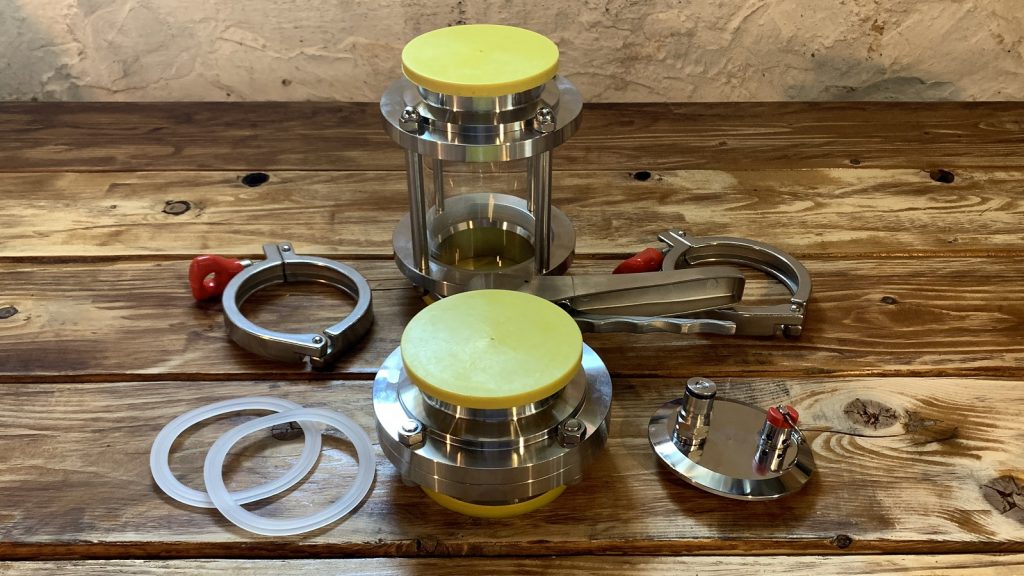
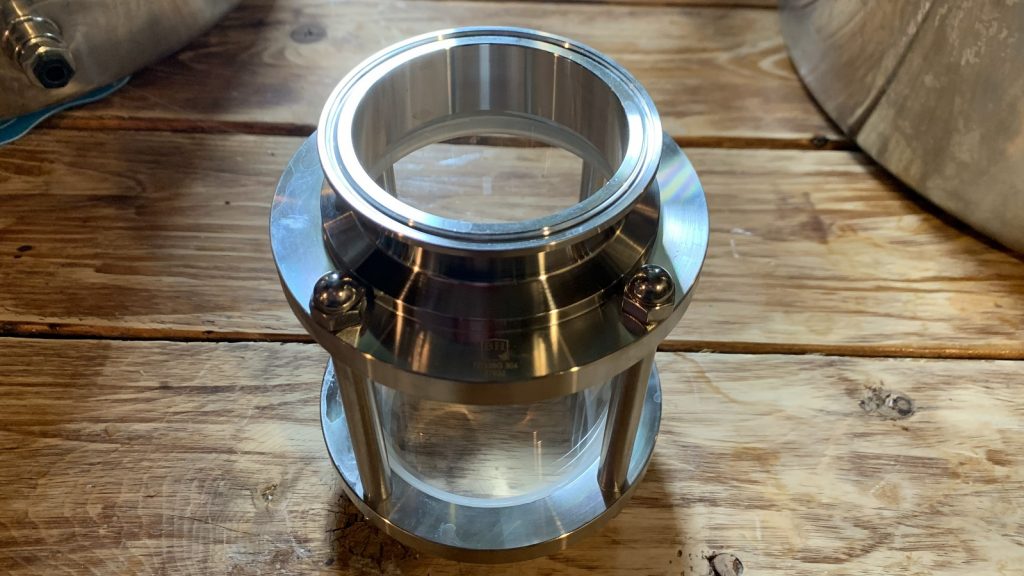
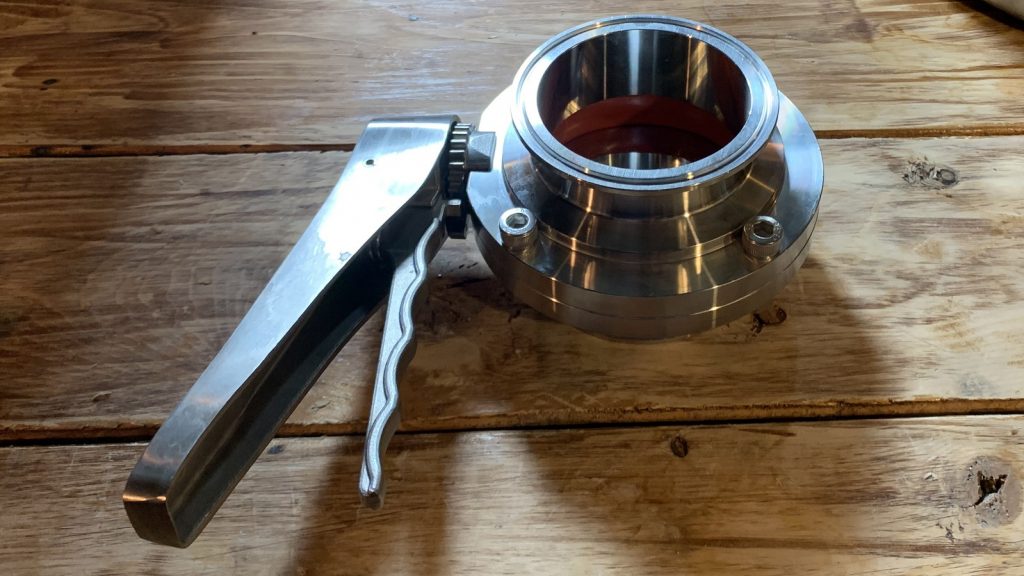
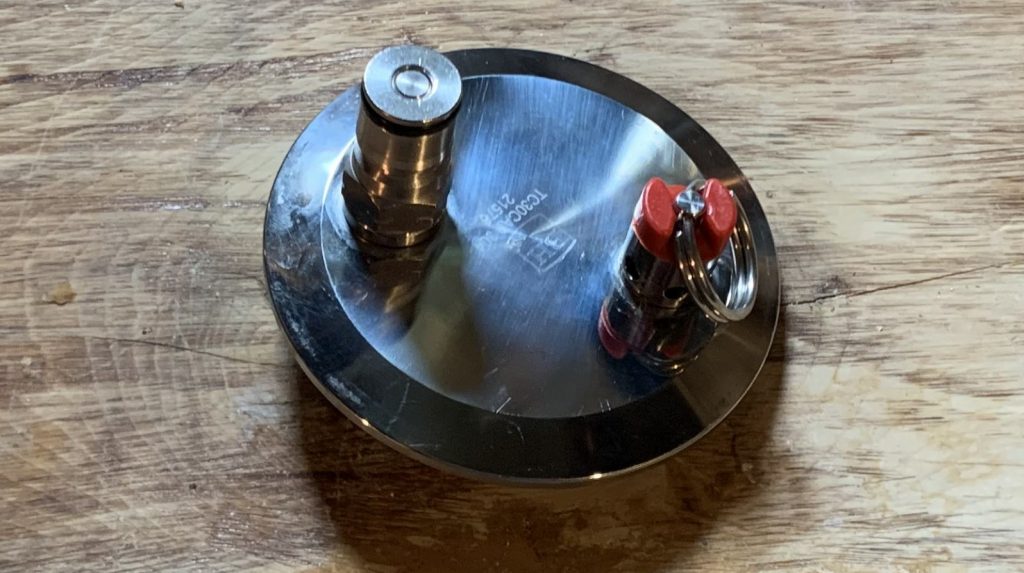

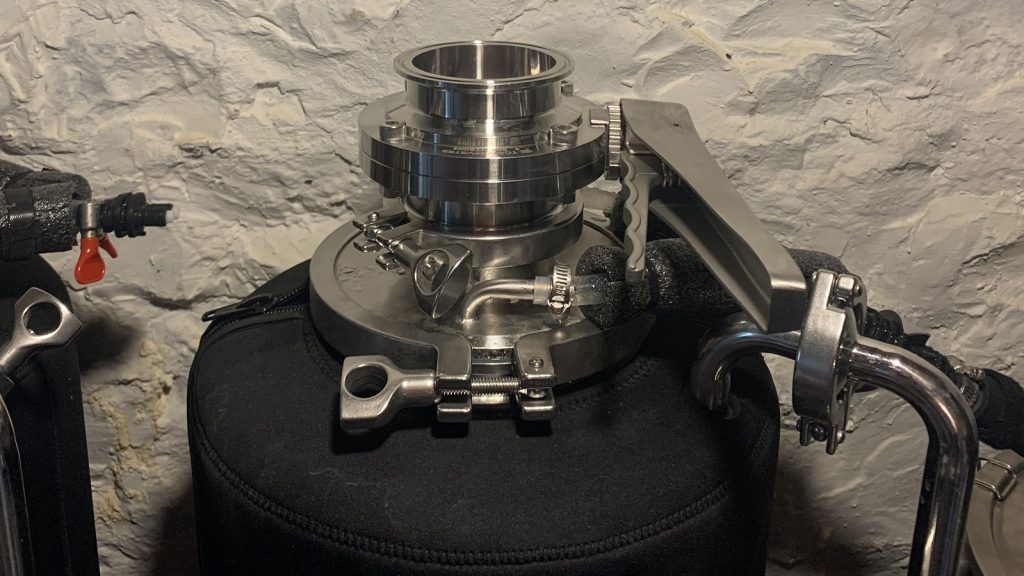
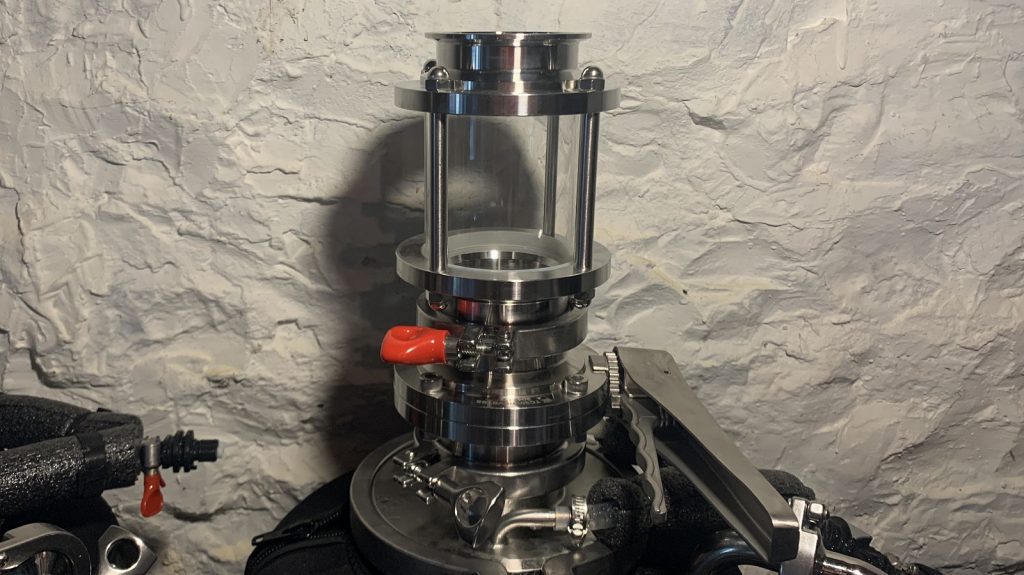
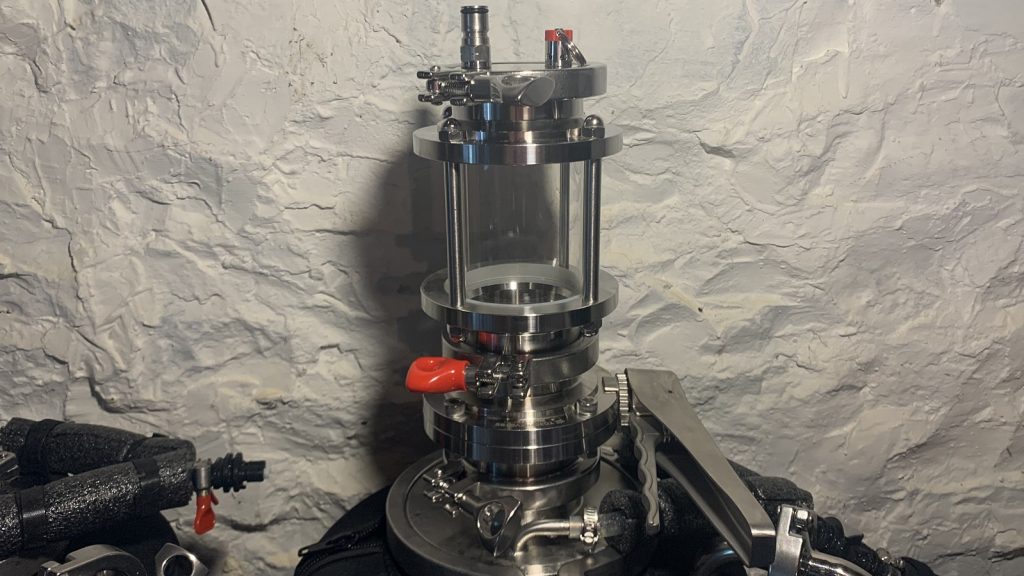

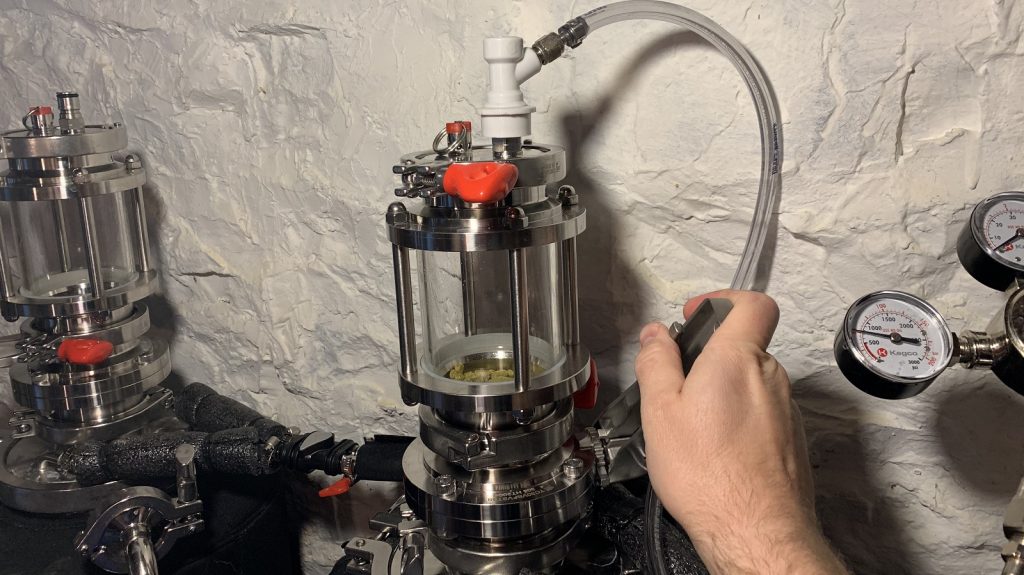










14 thoughts on “Product Review | The Dry Hopper by Brewer’s Hardware”
I have pieced together a similar device for much cheaper. This seems way overpriced.
Depending on the source and quality of the pieces yes, there’s bound to be some variability in price. At least with this I know that it is well made and sanitary, and I will pay a bit more for that (hence why I have unitanks!!)
Could you connect a blow off tube or air lock to the ball lock post and leave the butterfly cracked? That would vent through the hop charge thereby purging with natural Co2
Yes, you can! I thought of adding a spunding valve to the gas post on top instead of the blow off tube, actually.
I really like that idea… but if the device could t hold any pressure over night I have my doubts if this would work. It might screw it all up with a totally leaky fermenter
With it not holding gas overnight I recon this is the sight glass itself – I’ve had the same issue when pressure testing a sight glass, not sure if its the poor seal but reseating it didn’t help. I imagine the stainless steel version would be better in this regard as it’s got fewer bits. I guess the lesson is to remember to shut off the dry hopper with valve while fermenting to prevent any O2 ingress if leaving attached the whole way through.
That is a good point about the glass/stainless pieces. I’ll keep you posted on how it goes for me reseating it and if needed, using different gaskets.
3 flushes at 7psi seems very little, I would thinks there’s still a lot of oxygen in there.
I like the idea of this device, but giving up your PRV is not acceptable to me. That is the ultimate safety device for the unitank. If you blow off gets plugged with hop junk (it has happened) the PRV is there to keep disaster from occurring.
I’ve actually got a spunding valve set up on the blow off cane so there’s no need to worry about that for me. And in conversations I’ve had with some folks in the industry, these Ss unitanks are capable of withstanding much more pressure than advertised, mostly as a safety precaution against possible disaster, or messes like you say. I’ve never filled one that high, though.
I think the solution is to come up with a way to surround the dry hops in a gelatin capsule, like a time release vitamin, so that you can combine fining and dry hopping in one simple dose, along with a slug of liquid nitrogen in the capsule that can drive out any oxygen.
I’m working on my elevator pitch to venture capitalists for an $8 billion system. I still have to figure out the Bluetooth angle, the gig economy piece, cryptocurrency and a way to monetize home brewer personal data, however.
Frankly, I’d only accept investors who front money in doge.
You could add a basket inside the fermenter were the dry hops are suspended from day 1 (allowing any O2 to be completely consumed during fermentation) before dropping them in at the end. This can be done with the dry hopper (or similar) if you crack open up the butterfly valve just a smidge on day 1 of fermentation so gas can diffuse between the FV and hopper, but not open enough so that pellets fall in.
But as someone who freezes and vacuum seals every hop I buy from day 1 I think keeping hops fresh and only warming them just before adding has it’s own advantages, so long as you can keep O2 down.
And yet Denny and the old grainfather brewers laughed when I made a very similar 2″ setup